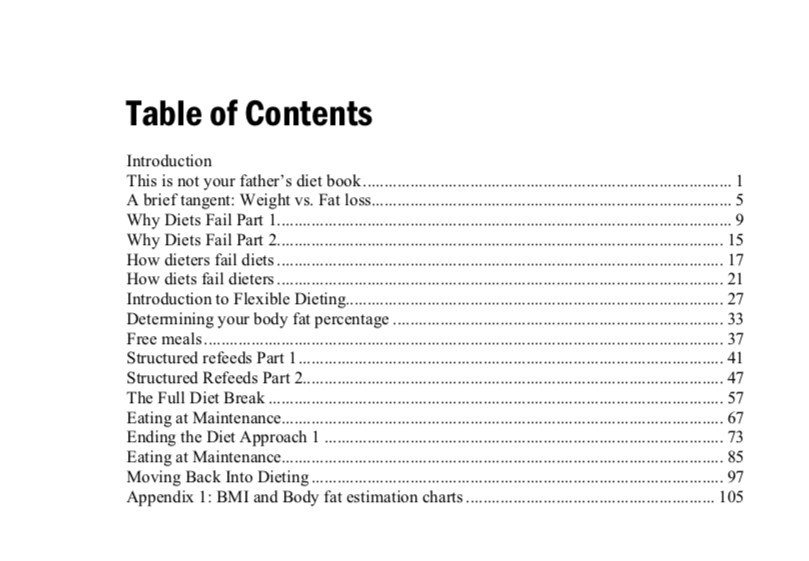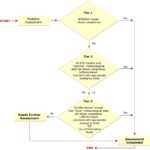A Guide to Flexible Dieting PDF delves into the psychological and physiological factors that often lead to diet failure, with a strong emphasis on the contrasting approaches of rigid and flexible dieting. This guide provides a science-backed approach to sustainable weight loss and maintenance.
Rigid dieting often involves a black-and-white mentality, categorizing foods as strictly “good” or “bad.” Rigid dieters perceive themselves as either “on” or “off” their diet. This all-or-nothing approach can lead to feelings of guilt and a loss of control when even a small amount of “forbidden” food is consumed.
Flexible dieting, conversely, encourages a more balanced perspective. It recognizes that no single food is inherently good or bad, and that all foods can be incorporated into a healthy eating plan. Minor dietary deviations can be addressed and corrected for in subsequent meals or days.
Numerous studies consistently demonstrate that flexible dieters achieve greater long-term success than their rigid counterparts. They experience reduced mental stress, fewer instances of binge eating, and are more likely to maintain lower body weights. The flexible approach ultimately yields more favorable overall dieting outcomes.
Unlocking the Power of Flexible Dieting: Strategies & Implementation
This guide builds upon existing research by outlining three distinct flexible dieting strategies designed to promote more sustainable and adaptable eating habits. These strategies include incorporating free meals, strategically implementing refeeds, and taking full diet breaks.
Free meals refer to the occasional inclusion of a single, non-diet meal to enhance adherence and manage cravings. Refeeds involve short periods of increased carbohydrate intake, designed to mitigate the body’s adaptive responses to fat loss.
The full diet break entails a 10-14 day period during which calorie intake is increased to maintenance levels. This strategy can improve long-term adherence, address metabolic adaptations, and allow dieters to practice maintenance eating habits.
The guide provides in-depth discussions of each strategy, offering specific guidelines for their effective implementation. This includes guidance on frequency of use, optimal setup, and identification of potential red flags indicating that a strategy may not be working as intended.
In addition to these core strategies, the guide also offers general insights into the underlying reasons for diet failure, along with practical guidelines for establishing effective maintenance diets.
 Guide to Flexible Dieting by Lyle McDonald Table of Contents
Guide to Flexible Dieting by Lyle McDonald Table of Contents
Alt Text: Table of Contents from “A Guide to Flexible Dieting” by Lyle McDonald, highlighting key topics such as rigid vs. flexible dieting, free meals, refeeds, and diet breaks.
While no weight loss dieting approach can guarantee specific results, adopting flexible eating habits can significantly increase your likelihood of achieving and sustaining long-term success. This involves understanding your body’s signals and developing a mindful approach to food choices.
Real-World Flexible Dieting Success Stories: Testimonials
The following are testimonials from individuals who have experienced the benefits of flexible dieting:
“I’ve read a lot of diet books, and most have gotten me to lose weight, but this is the first book that helped me learn how to keep the weight off. And no other diet allowed me to eat the foods that I enjoyed and lose weight. This book helps you to figure out how to eat while losing, maintaining or gaining without getting into the minutia that other plans do.
With this book I was able to go from around 20% bf to 14% without killing myself, and all the while maintaining the muscle mass I already had developed. I’m using right now to gain some more muscle mass while trying to limit body fat gained, with very good results thus far. I would highly recommend this as the first and possibly the last diet book that anyone could ever need.”
– Mike, Washington
“I would like to commend this easy to read book which describes in adequate detail the logic and science behind a flexible approach to dieting. This is the one for people who want to customize their own eating plans going from basic principles that work and are backed with research. This is not a cookie cutter or paint by numbers approach for dummies, but a method of thinking flexibly about the whole business of adjusting diet to suit one’s needs, whether for weight loss or maintenance.”
– Dr V Lewis. Queensland Australia
Expert Perspectives on Flexible Dieting
Leading experts in the field of nutrition and fitness have also recognized the value of flexible dieting:
“For many people, dieting is synonymous with eating dry chicken and broccoli six times a day, starving themselves and generally feeling miserable. If more people would learn the basics of how the body mobilizes and burns fat, more people would be able to achieve their goals, lose weight and keep it off. As Lyle himself would say: The best diet is the one you can actually stick to over time, and in The Guide to Flexible Dieting book he teaches you just how to do so.
I find this book to be the best starting point for people on how to learn more about the physiology of dieting, how to implement dieting principles based on science which works time and time again, avoiding the most common errors, implementing free meals and refeeds to make the diet even more effective (nothing is called “cheating” or “breaking the diet” here), and how to move back to maintaining your weight in a simple and easy way – even without counting calories.
This is the best book for everyone who is tired of failing on their diets, or their diets failing them – and I highly recommend it for those who want to learn the mindset of successful dieters instead of strict meal plans which never work anyway.”
Borge (aka Blade) – Norway MyoRevolution
Conclusion: Embracing Flexibility for Sustainable Success
The key to successful and sustainable dieting lies in adopting a flexible mindset. By moving away from rigid restrictions and embracing a more balanced approach to food choices, individuals can achieve their weight loss and maintenance goals while enjoying a healthier and more fulfilling relationship with food. The A Guide to Flexible Dieting PDF offers a valuable resource for anyone seeking to break free from the cycle of restrictive dieting and embrace a more sustainable and enjoyable path to wellness.

